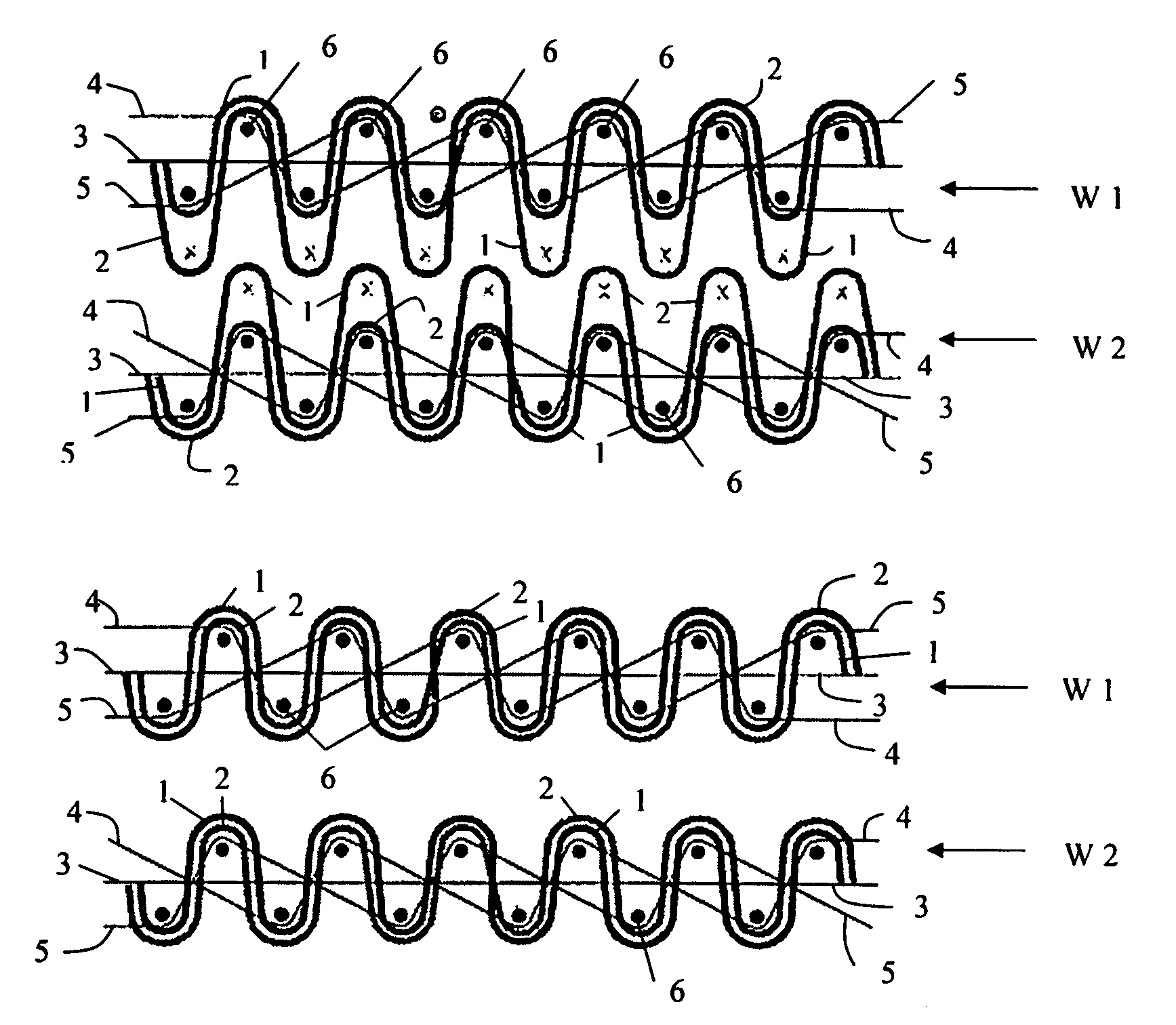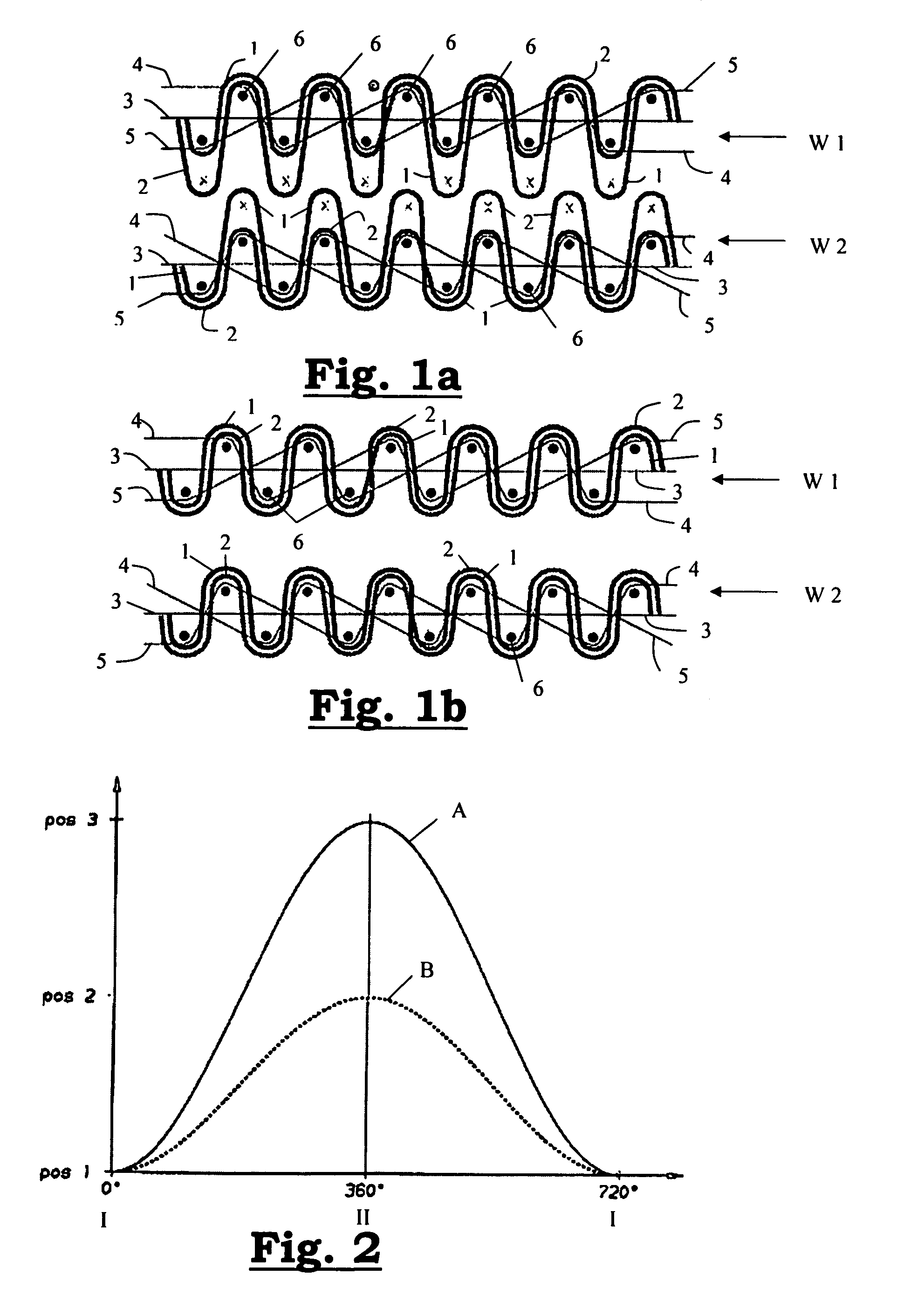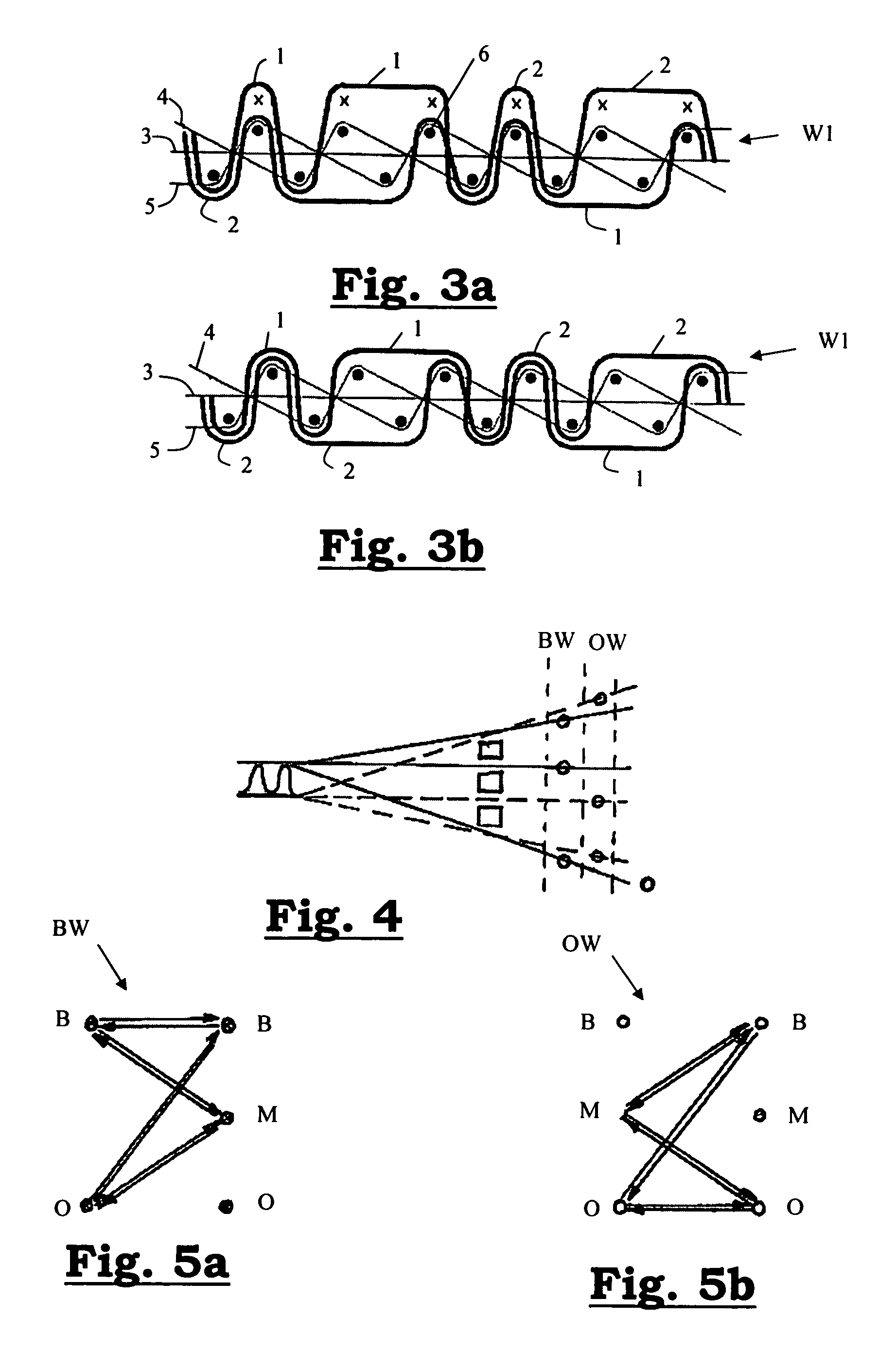Method and system for weaving fabrics with two useable sides
a fabric and side weave technology, applied in the field of weaving a fabric, can solve the problems of not being able to weave rib-shaping fabrics, not being able to use rib-shaping fabrics, and requiring two “stem warps”
- Summary
- Abstract
- Description
- Claims
- Application Information
AI Technical Summary
Benefits of technology
Problems solved by technology
Method used
Image
Examples
Embodiment Construction
[0081]At the application of the method according to the invention illustrated by FIGS. 1a and 1b, two fabrics (W1), (W2) are woven simultaneously on a weaving machine with two grippers (7), (8). For this, each fabric (W1), (W2) is provided with a series of warp thread systems. Each warp thread system comprises a first figure warp thread (1), a second figure warp thread (2), a tensioning warp thread (3) and a system of two binding warp threads (4), (5) working together. In successive operating cycles of the weaving machine, each time a respective shed is formed between the warp threads (1–5) of the warp thread systems for the upper fabric (W1) as well as between the warp threads of the warp thread systems for the lower fabric (W2). In each operating cycle, two weft threads (6) are inserted at a respective weft insertion level. The upper weft thread (6) is inserted in the shed between the warp threads (1–5) for the upper fabric (W1). The lower weft thread (6) is inserted in the shed b...
PUM
 Login to View More
Login to View More Abstract
Description
Claims
Application Information
 Login to View More
Login to View More - R&D
- Intellectual Property
- Life Sciences
- Materials
- Tech Scout
- Unparalleled Data Quality
- Higher Quality Content
- 60% Fewer Hallucinations
Browse by: Latest US Patents, China's latest patents, Technical Efficacy Thesaurus, Application Domain, Technology Topic, Popular Technical Reports.
© 2025 PatSnap. All rights reserved.Legal|Privacy policy|Modern Slavery Act Transparency Statement|Sitemap|About US| Contact US: help@patsnap.com



